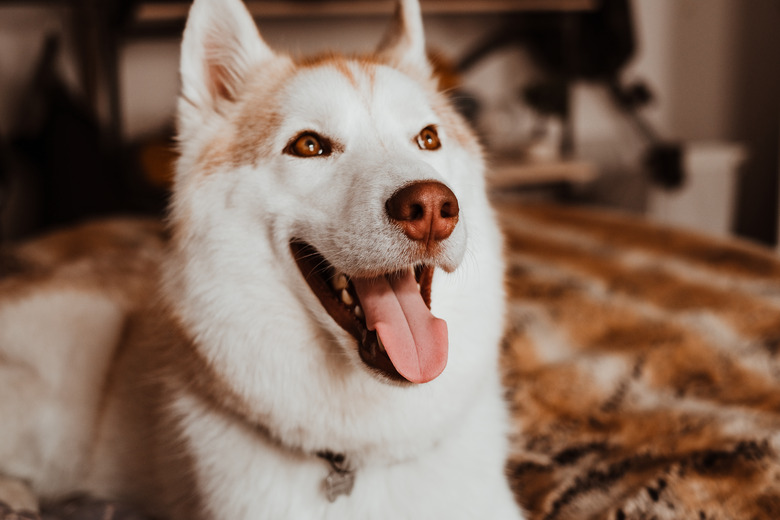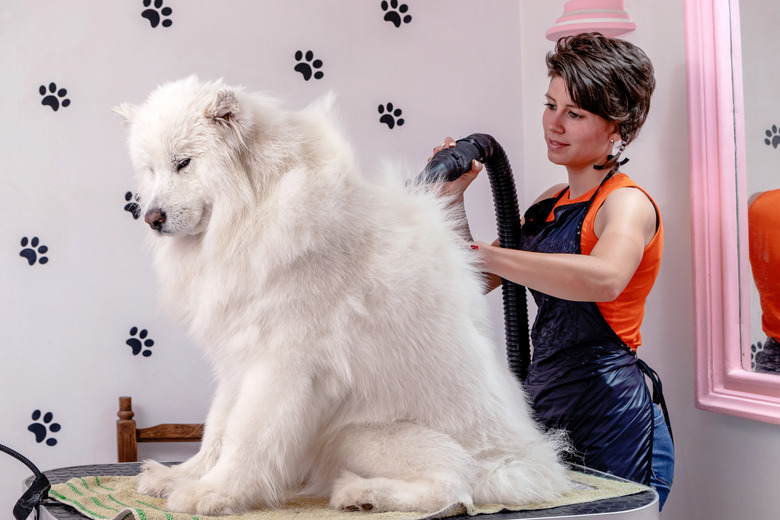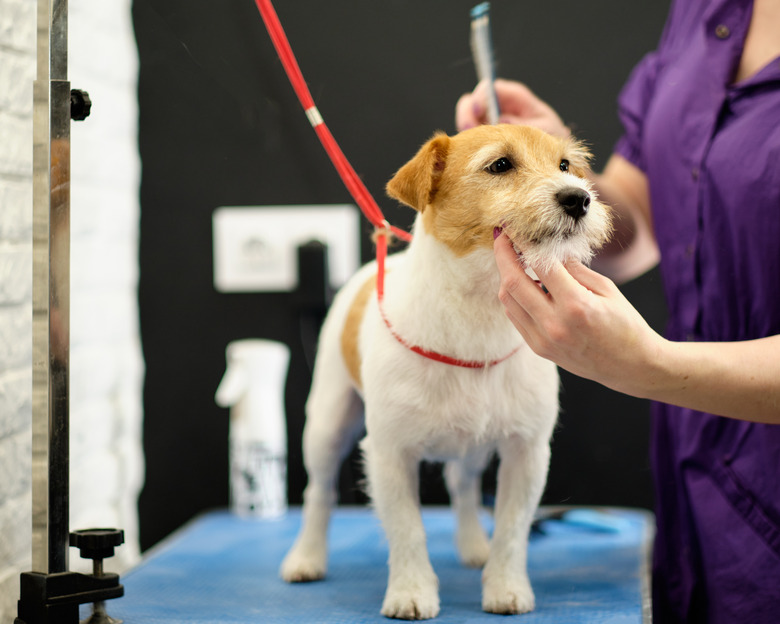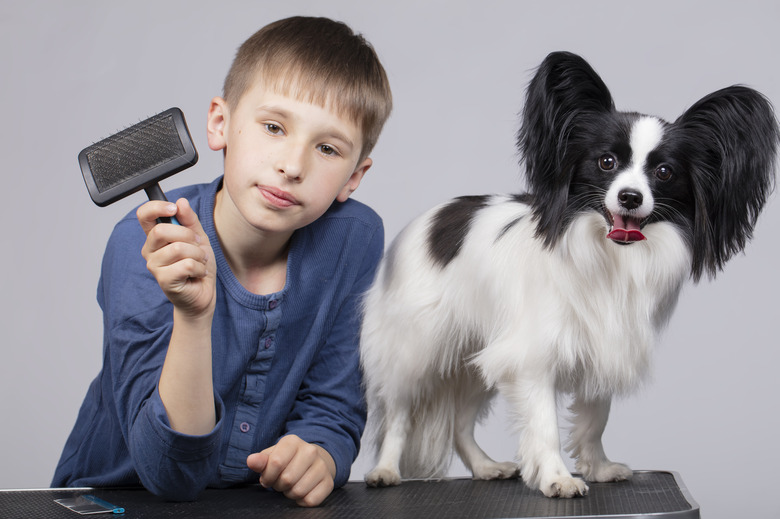Why You Shouldn't Shave A Short-Haired Dog
It's hot, your dog rolled around in something and their hair is a mess. Or they're shedding beyond belief — and you need relief. Surely shaving all of their hair off will solve these problems, right? No, shaving your dog is not a cure-all, and is not recommended.
Not all dogs should be shaved down. Dog grooming and hygiene are important parts of your pet's health. But a full haircut could actually leave many breeds worse off than before.
Do dogs need haircuts?
Do dogs need haircuts?
No dog breed requires a full haircut or shave down unless it is deemed medically necessary. Each breed's hair grows in a particular way. Many of us cannot constantly be brushing and combing our dogs, tending to tangles, preventing matting, and ensuring that they're always as clean as possible.
Full haircuts are the only practical way to go for longer-haired breeds — like a Maltese or Shih Tzu. Dogs like these (without undercoats) have hair that grows out quickly. Their hair often covers places that benefit from staying clean and clear such as their eyes, mouths, and sanitary areas. At the very least, these areas need to be tended to when dealing with longer-haired breeds. Without regular haircuts, the fur of a long-haired breed can easily mat and tangle. This can lead not only to discomfort but other health problems for a dog.
Reasons to not shave a short haired dog
Reasons to not shave a short haired dog
- Temperature regulation. While you may think it's making your dog cooler, it's actually doing the opposite. This is because their natural heat regulation has been disrupted.
- Sunburn and skin cancer. They can also become more prone to sunburns and over time skin cancer if they lose these important layers.
- Uneven growth Their coat will be forever damaged and never look the way it did the day you first met them. This is due to the undercoat growing at a different rate than the outer layer. Also, it can look odd aesthetically around the neck or head area. Though this also depends on where the clippers first began the job.
- Patchy fur. Shaving will also lead to a patchy look to the fur that will never fill in.
- Shedding continues. Shaving a dog with an undercoat doesn't fully remove the undercoat, it simply makes it shorter. So now the hairs that are falling out all over your home, car, and furniture aren't long ones, but rather super tiny, short, and spiky irritations that leave just as much of a mess but are often even more difficult to clean up.
- Allergies won't stop. Many people believe that if they have an allergy to dogs, it will be eradicated by shaving down that dog. But because it's not the hair that causes the allergic reaction, this will absolutely not solve the problem. Hair can be an irritant for sure, but the actual allergic reaction is coming from the dander and saliva of the animal in question, not their fur or hair. A shave-down will not eliminate dander or saliva from a dog.
Alternatives to shaving a short haired dog
Alternatives to shaving a short haired dog
Just because you can't shave them down, that doesn't mean you're completely helpless in stopping or greatly reducing shedding. Regular trips to your favorite dog groomer can greatly alleviate this nuisance. Taking a double-coated dog for regular grooming appointments two to four times per year, particularly around the typical shedding seasons of spring and fall, is your best bet in prevention and treatment.
A good groomer will use high-quality shampoos and conditioners specially formulated for de-shedding treatments. They'll also use a high-powered dryer while brushing to blow out all of that undercoat. If your dog has spots that grow in thick around their sanitary area and booty, the groomer can lightly trim or shave these in addition to any other small, problem spots. They will also happily do light trims around their feet, including their paw pads to keep them clean and prevent grime from building up.
Dog breeds that cannot be shaved and those that can
Dog breeds that cannot be shaved and those that can
There are very specific dog breeds with short haired coats or double-coated that do not benefit from a shave — unless for specific medical reasons.
Dog breeds with short hair and double coats that should not be shaved:
- American pit bulls
- border collies
- bulldogs
- corgis
- German shepherds
- Labrador retrievers
- pomeranians
- pugs
- rottweilers
- Samoyeds
- Shiba Inus
- Siberian Huskies
- short-haired and double-coated terriers (such as Jack Russells and Papillons)
On the other hand, some dog breeds do well with haircuts and even full shave-downs. This includes curly-haired breeds such as:
- poodles and poodle mixes
- cocker spaniels
- curly-haired terriers (such as airedales, schnauzers, Scotties, Yorkshires, Bedlingtons, and cairns)
If you aren't sure what type of fur your dog has check with your veterinarian or groomer.
The difference between dog fur and dog hair
The difference between dog fur and dog hair
Fur and hair are genetically the same, however, the terms are used for the different qualities types of dog hair can possess.
When people refer to fur, they're speaking about the stuff that tends to be shorter and more densely packed. It often comes in what's called a double coat. This consists of an outer, protective layer as well as an inner, insulating layer that lies closer to the dog's skin. The outer and inner layers tend to grow at different rates. The inner undercoat layer is what typically sheds during various times of the year. Fur also goes through a quicker growth cycle than hair. This is why dogs with fur tend to shed more.
What people refer to as "dog hair" is the hair that comes in one single coat. It can be straight or curly and typically gets longer than fur. Dogs with hair tend to have it everywhere — including their sanitary areas and around their eyes. Therefore, it is why important for health hygiene reasons to keep at least these areas cut or clipped. When a dog with hair gets a full haircut, it grows back steadily and evenly — since it's only one layer or coat.
What's the purpose of a dog's undercoat?
What's the purpose of a dog's undercoat?
The soft undercoat that lies underneath the protective outer layer of fur helps protect a dog's skin from the elements. Many people think that a dog's undercoat exists exclusively to keep a dog warm in cold weather.
Keeping your dog warm is only one important aspect of the undercoat's job. It works as insulation, meaning that it can also keep your dog cool, preventing them from overheating in hot weather. It also protects against the sun's rays, preventing sunburn which can lead not only to pain and irritation but also to future cases of skin cancer.
Because the undercoat is so vital to your dog's temperature regulation and protecting them from the elements, it's imperative that they keep it. Shaving a double-coated dog removes these protections and can be very harmful.
What if my short haired dog has to be shaved?
What if my short haired dog has to be shaved?
Surgeries typically require spot shaves. If a mat develops in your dog's fur or something else gets stuck they might also require shaving. There are always exceptions to every rule, and there might be a time in your short haired or double-coated dog's life when they need to be shaved.
If it's a question of your dog's health and a trusted professional groomer or veterinarian has recommended it — then absolutely have them cut your dog's hair. Just make sure your dog's skin is protected from the sun and other elements by using dog-safe sunscreen and comfortable dog clothes. You should also keep them inside (as much as you can) while it grows back. Always ask your dog's veterinarian and groomer if you have any questions or concerns.
The bottom line
The bottom line
Shaving a short haired dog or a dog with an undercoat can damage their coat and also adversely affect their body's natural temperature regulation resulting in negative impacts on their health. It also does nothing to stop or prevent shedding. Visiting your groomer two to four times per year is the best way to de-shed your dog to ensure both you and your dog are healthy, comfortable, beautiful, and safe.



